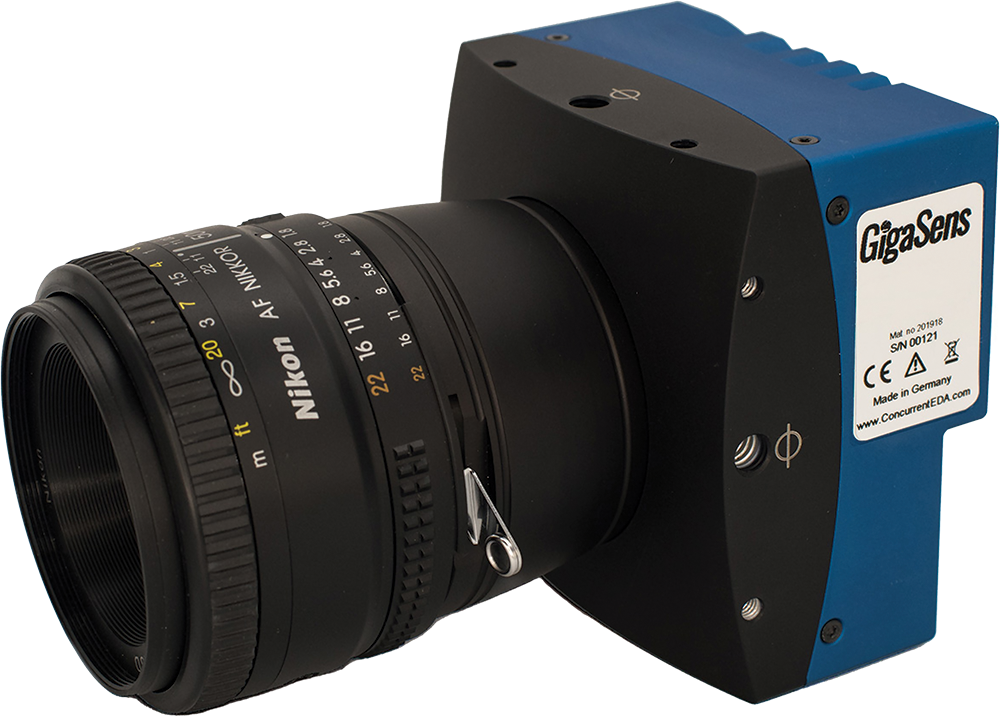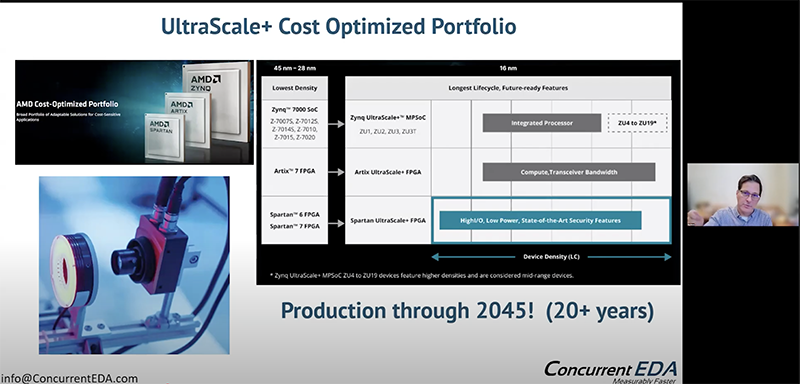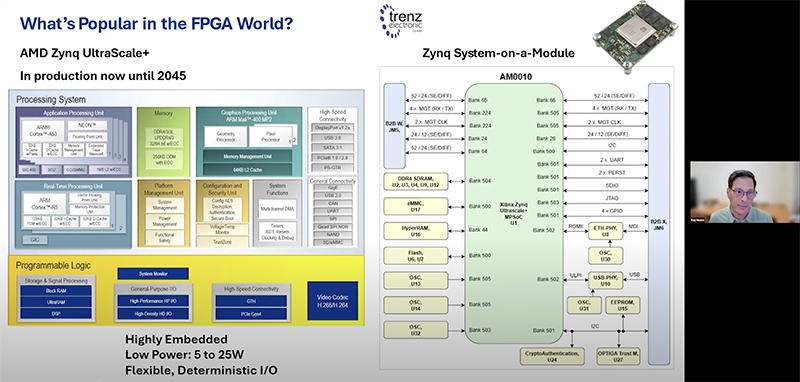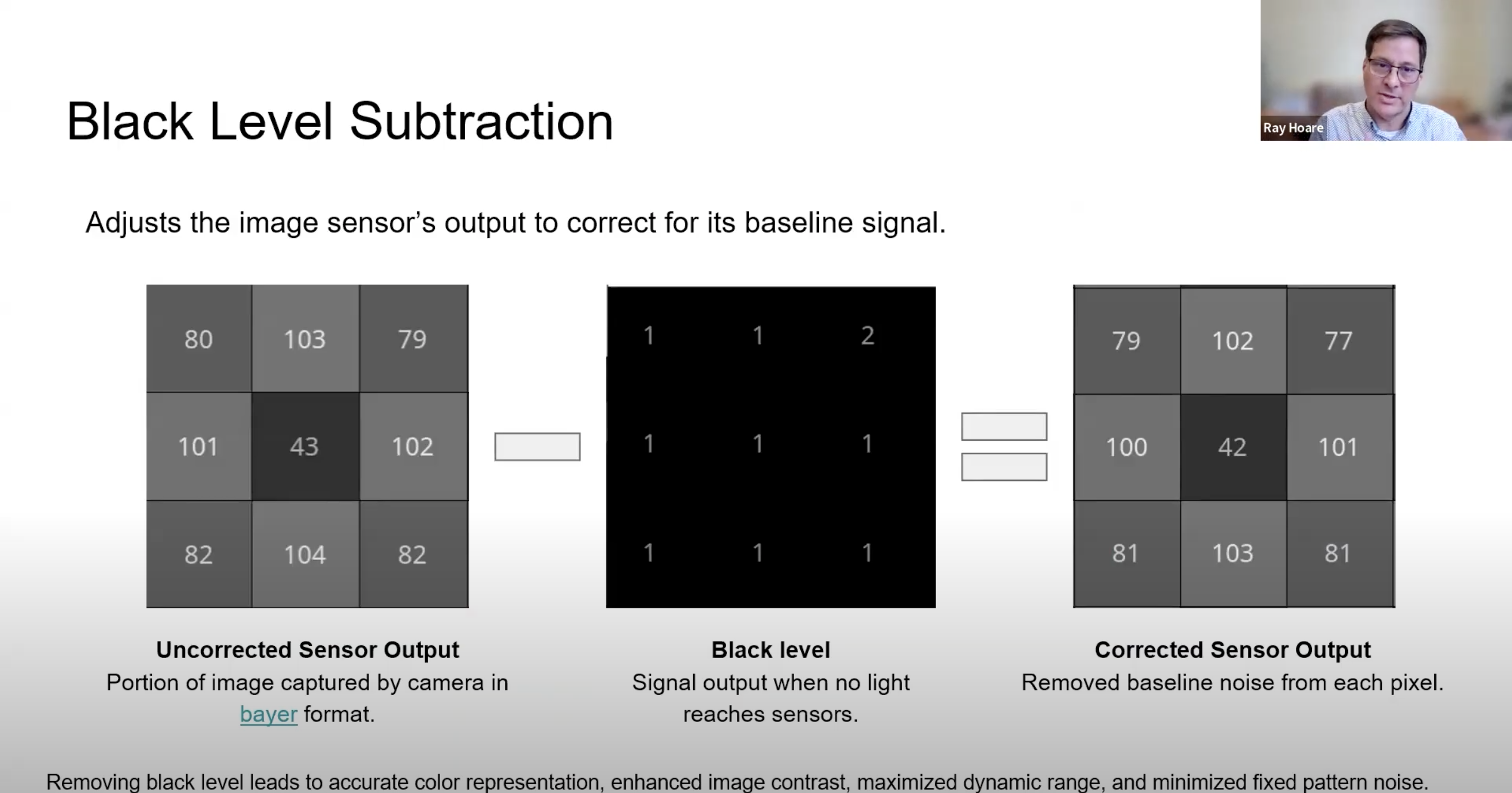News
Learn about the latest in FPGA design services, machine vision design services, custom machine vision cameras, and FPGA and SoC modules in our news section.
Discover our FPGA and Vision System Design at Embedded World 2025Concurrent EDA is an FPGA design services company offering OEM design, sales, and integration of machine vision systems and components. For nearly 20 years, we’ve been transforming custom algorithms into FPGAs and System on Chips (SoCs) and helping companies solve data-processing challenges in high-speed, high data-rate machine vision systems. Join us at Embedded World 2025 in booth 4076 with Trenz Electronic to learn how we can help transform your embedded vision systems and components through FPGA design services and more. |
 |
Could Low-Cost, Low-Power FPGAs Benefit Your Application?FPGA technology has advanced rapidly in the last few years, with higher logic density, lower power, more I/O, and better security features, but this doesn’t necessarily add up to more expense. For market leader AMD, the Zynq UltraScale+ FPGAs represent a high-end option with flexible I/O and powerful processing capabilities, while the Spartan UltraScale+ line offers a high I/O, low-power FPGA family at a lower price point. In this video, Ray Hoare from Concurrent EDA talks about these FPGAs and their unique benefits and features. |
 |
What’s Popular in FPGAs Today and Why You Should CareWhat is new and popular in the world of FPGAs and how can it impact your machine vision or edge processing applications? In this video, Ray Hoare from Concurrent EDA talks about the latest exciting developments in FPGAs, including those in AMD’s line of Zynq UltraScale+ FPGAs, which are in production now until 2045. These low-power FPGAs offer flexible I/O and powerful processing capabilities for the high-speed machine vision cameras of today and tomorrow. |
 |
High-Performance Image Signal Processing in FPGAs ExplainedHandling high-performance image signal processing (ISP) in FPGAs embedded inside machine vision cameras delivers r eal-time processing across varied lighting and sensor conditions. In this short video, Ray Hoare from Concurrent EDA talks about high-performance ISP in FPGAs for applications including black level subtraction, flat field correction, white balancing, color correction, bad pixel correction, demosaicing, sharpening, and sRGB conversion. |
 |
Latency Matters in High-Speed Imaging – But FPGAs Can HelpIn high-speed imaging where real-time feedback is required, latency cannot be tolerated, especially in mission-critical applications. In this video, Ray Hoare from Concurrent EDA talks about what latency is and why it matters in systems leveraging high-speed or high-data rate cameras. He explains how leveraging an FPGA near the image sensor allows the system to handle the processing requirements at full frame rates and in real time. |
 |
FPGA Design Services for High-Speed Machine Vision CamerasRay Hoare from Concurrent EDA discusses how FPGA technology is transforming machine vision applications. Learn how algorithms can be embedded directly into cameras, frame grabbers, or embedded systems to process images in real time, which reduces latency from milliseconds to microseconds. The video covers applications such as image enhancement, classification, laser tracking, and 3D metrology, and showcases the high-speed GigaSens machine vision camera line. |
 |
What Vision Engineers Might Not Know About FPGAs, a Powerful Processing OptionMost vision engineers are familiar with the two most common chipsets for machine vision applications: CPUs for general processing and GPUs for more compute-intense tasks. These two options address virtually any conventional application. But as industrial frameworks and automation demand more from vision systems, engineers might need to look beyond their familiar toolkit and consider a processing option that often gets overlooked. FPGAs have been quietly evolving, and for specific vision challenges that involve real-time processing, tight space constraints, or unique I/O requirements, they’re worth a serious look. |
 |
How Evolving FPGA Architectures Will Transform Machine Vision ApplicationsCPUs process instructions sequentially, while the multiple cores within GPUs perform parallel computations. FPGAs take parallelism to an entirely new level. Recent advances in FPGA architecture — particularly the integration of dedicated AI processing elements — are reshaping the possibilities for future machine vision applications. Understanding how these devices handle image processing can help vision engineers identify opportunities where this established though fast-advancing technology might outperform traditional approaches. |
 |
Can Your Machine Vision System Handle 10 G at the Edge?Why 10 Gb/s, 25 Gb/s, or 100 Gb/s? High-speed data interfaces are essential in today’s machine vision and automation systems. A single 4-lane MIPI camera can output 10 Gb/s of image data, while CoaXPress (CXP-12) cameras deliver 10 Gb/s per lane, supporting up to four lanes per camera. These data rates not only support high-resolution, high frame-rate imaging but also reduce latency per frame — a critical advantage in real-time control systems where tight sense-compute-communicate-actuate loops are necessary for precision in factory automation and robotics. While modern PCs — oftentimes augmented with GPUs — are sometimes used in high-speed, high-data rate applications, FPGAs offer a more compact and cost-effective option for powerful processing. |
 |
Contact Us
Email
